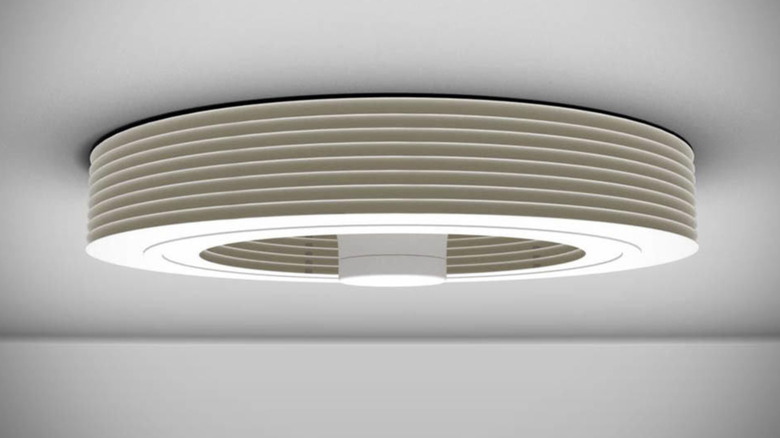The Modern Ceiling Fan That's Easier To Clean And Maintain
We may receive a commission on purchases made from links.
Dusting and cleaning ceiling fans is an annoying and easily forgotten task, but it's also important for maintaining good air quality in your home and ensuring that your fan works well. If you're tired of reaching up with your duster and testing out all the hacks that will keep your ceiling fan dust-free, it may be time to upgrade your old ceiling fan to a bladeless one. Bladeless ceiling fans can be a bit pricey, but they're easier to maintain and more energy efficient than traditional ceiling fans. Plus, their futuristic-looking design makes them quieter and removes the risk of injury from getting too close to a high-speed, spinning blade.
If the term "bladeless fan" sounds too good to be true — that's because it kind of is. Bladeless fans do have blades, but they are much smaller than those of traditional fans and are hidden from view either inside the base of the fan or in a cage. These fans work by pulling air in using motors, moving the air through the device, and pushing air out through narrow openings. Throughout the process, additional air is pulled in, multiplying the total amount of air that is moved by the fan — all without the use of large, visible blades. The carefully considered design means these fans can propel air around the room without the extra bulk of a ceiling fan while being easier to clean and maintain.
How to clean and maintain a bladeless fan
Cleaning and maintaining a bladeless ceiling fan is also generally easier than cleaning a traditional ceiling fan, though specific instructions will vary depending on your exact product. There is some variance in the structure of bladeless ceiling fans, as some are focused on utilizing air-multiplying technology, while others are considered bladeless because they conceal the blades within a lighting fixture. Either way, rather than having to dust a number of individual long fan blades, you're dealing with a smaller unit and less total area. Additionally, the concealed blades don't get covered in as much dust as regular fans' blades, meaning you can spend far less time cleaning.
You can clean a bladeless fan using a microfiber cloth, a duster, a vacuum dusting attachment, or even a mini blind cleaner. For a quick clean, remove dust from the outside of the unit only, keeping in mind that there should be less dust on the blades than with a regular fan. When the time comes for a deeper clean, you don't have to worry about removing each blade and getting into the motor. Simply remove the housing around the motor and clean it separately using water. Vacuum dusting attachments, like the Cen-Tec Systems Premium Dusting Brush Vacuum Tool from Amazon, can be used to gently but effectively collect dust, especially from the small spaces of a bladeless fan.

